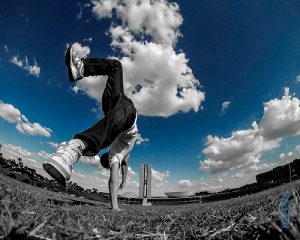New Citations | Research in Motion
 Physiological researchers have been studying the lower body through examining impacts of training, movement instruction, and innovative research measurements on an individual’s well being. The following articles represent recent developments in physiological research, moving our understanding of lower limbs and the body as a whole forward, one step at a time.
Physiological researchers have been studying the lower body through examining impacts of training, movement instruction, and innovative research measurements on an individual’s well being. The following articles represent recent developments in physiological research, moving our understanding of lower limbs and the body as a whole forward, one step at a time.
The Importance of Form
Improper biomechanics after recovering from ACLR treatment can lead to increased injury and accelerated osteoarthritis in the knees. In their study, Ward et al. (2018) observed how voluntary functions of the quadriceps function can impact knees biomechanically. BIOPAC’s EMG100C with MP research system were used to collect EMG signals that were compared to MEP amplitudes of participants, both resting and jumping. Participants who used more isometric contraction and activation when jumping were observed to have healthier force reduction on impact. With quantitative measurements on the biomechanical impacts of different forms of jumping, physical therapists and trainers now have deeper insight on guiding the form of those recovering from ACLR treatment.
Jumping into Better Habits
Researchers have been able to identify that plyometric training leads to healthy neuromuscular habits for children and adults, improving form in running, jumping, and other activities. Elastic surfaces have been observed in leading to strain reduction and increased neuromuscular strength. In their study, researchers Arabatzi et al. (2018) compared differences in Achilles tendon strain of children before and after receiving multiple plyometric training sessions, and between groups who did training on a trampoline and flat ground. Hypothesizing potential changes in mechanical properties of the Achilles tendon after the training, researchers captured data from differentiating knee and ankle movement using BIOPAC’s DA100C with MP research system. The researchers concluded plyometric training decreased Achilles tendon strain in both groups, but with increased efficiency and strength building when on a trampoline.
Ankles and Brains
An ankle muscle activation study represented a unique approach to observing how ankles are affected by muscle coactivation through using the neuroplasticity measurement device transcranial magnetic stimulation (TMS). Participants were measured as they stood and sat down, both conventionally and using muscle coactivation. BIOPAC’s EMG100C research system with AcqKnowledge software helped indicate to researchers instances of muscle coactivation. Their findings revealed insights in assessing neuroplasticity, and encourage future research to observe neuroplasticity in similar coactivation standing tasks. Explore other EMG Applications here.
Stay Connected